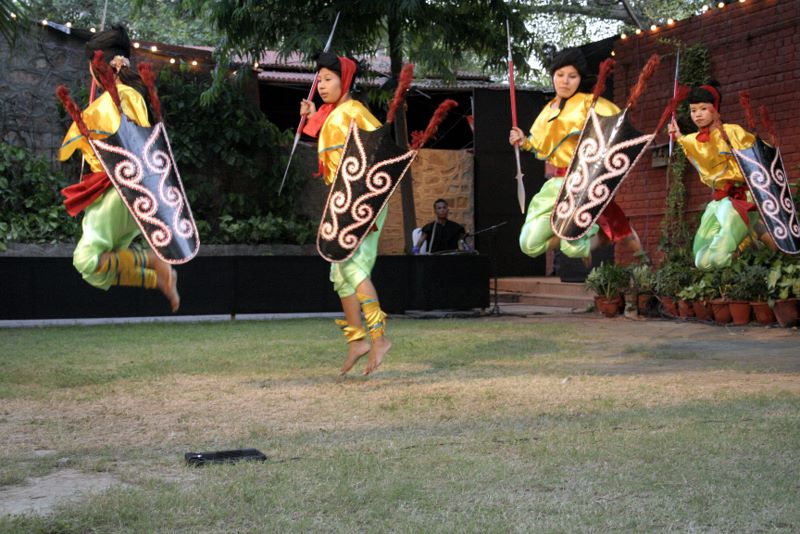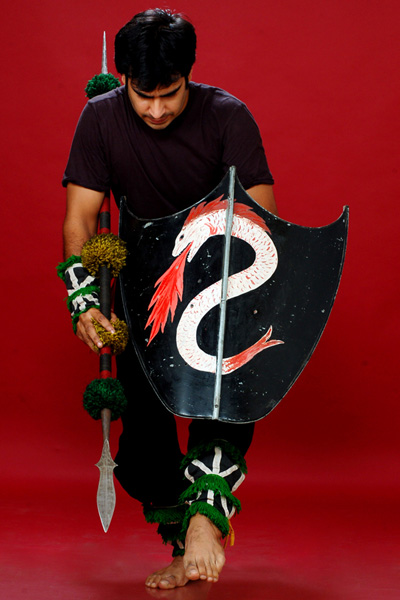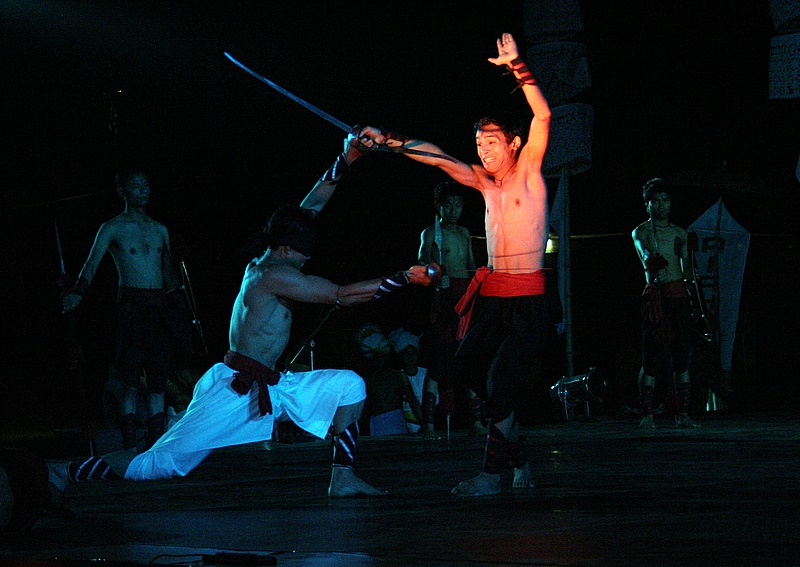- 346 views
Thang Ta: Martial Arts from Manipur
Manipur, the land of mesmerising traditions and vibrant heritage, features a rich cultural tapestry of dance, music, games, and sports. The state is also the birthplace of the martial arts tradition known as Thang-Ta, which showcases the essence of Manipuri aesthetics. Thang-Ta is inspired by the unarmed combative arts such as Sarit Sarat and Mukhna. Both Sarit Sarat and Mukhna are forms of martial arts in which several techniques are deployed by an expert to overcome the assailants without the use of any weapons. On the contrary, the use of sophisticated weapons is evident in Thang-Ta. However, there are many similarities in terms of the movements and techniques among all these three art forms, and each complements the other. These martial art traditions are firmly rooted in the local culture of the province testifying that the people of the region had intimate knowledge of self-defence since olden times.

Thang-Ta martial artists performing in Delhi.
Image Source: Wikimedia Commons

Sacred idols of Lord Pakhangba and his divine consort at the Pakhangba Temple, Kangla Fort, Imphal.
Image Source: Wikimedia Commons
The term Thang-Ta is a combination of two words: Thang (means sword) and Ta (means spear). Also, the term Huyen Lallong is analogous to Thang-Ta in old Meitei language. The origin and development of Thang-Ta is chronicled in several mythical lores pertaining to the land of Manipur. For instance, Pudin Puya, an ancient manuscript, records how the limbs and bones of Tin Sidaba (mythical figure) turned into swords (Thang) and spears (Ta). Another manuscript named Thengourol affirm Thang-Ta implements to have originated from the ancestral deity of the Meiteis named Pakhangba. Such myths suggest that the Meiteis considered Thang-Ta to be a gift of gods and, therefore, sacred. Although the origins of this tradition lie in obscured antiquity, it is now on the verge of becoming a world sport.
In Thang-Ta, the use of swords and spears is customary. The trainees undergo several stages of training, and it is only after gaining complete knowledge of the form that they are instructed on the advanced methods. Some of the salient approaches and techniques employed in Thang-Ta are known as Thangbi, Khutlon, and Khonglon.
Thang-Ta bears witness to the rise and growth of the Meiteis, Heirem-Khunjas, Moirangs, and many such communities that have inhabited the region since ancient times. They deployed the Thang-Ta techniques to gain political power and claim dominance over other kingdoms. Following a series of constant tussles among the different ethnic communities, the Meiteis eventually succeeded in subduing their opponents and establishing their suzerainty over the Imphal valley. The art of Thang-Ta and warfare reached its zenith during the rule of Khangemba (1597-1652 CE), when the kingdom had to confront the invading Burmese hordes. The Meitei cavalry resorted to Thang-Ta to repel the invaders and in the process, perfected their prowess. Another important milestone in the chequered history of Thang-Ta is the Anglo-Manipur War (1891). Although the Thang-Ta warriors like Paona Brajabashi gallantly fought at the frontlines of the battlefield, the British contingent finally succeeded in seizing control over the kingdom. Consequently, the practice of Thang-Ta came to a standstill for a prolonged period of time because of laws enforced by the British government.

A Thang-Ta practitioner.
Image Source: Wikimedia Commons
Besides being related to munitions and strategies of combat, Thang-Ta also forms an indelible part of the culture of the Meiteis with ceremonies like Lai Haraoba and Kwak Taanba featuring its demonstration. Moreover, various Manipuri performing art forms also take inspiration and borrow elements from Thang-Ta.

A blind-folded Thang-Ta warrior showing his skills while defending himself.
Image Source: Wikimedia Commons
Withstanding the test of time, Thang-Ta has evolved from an indigenous sport to a world sport. Beyond being a warfare strategy, Thang-Ta holds a significant place in the cultural life of Manipur, having played a crucial role in the rise and fall of various clans and kingdoms. Today, Thang-Ta is preserved by its skilled practitioners, taught in sports and educational institutions, and promoted across the nation by dedicated associations ensuring that its legacy continues to inspire generations to come.
 Government of India
Government of India

 Recognizing the ongoing need to position itself for the digital future, Indian Culture is an initiative by the Ministry of Culture. A platform that hosts data of cultural relevance from various repositories and institutions all over India.
Recognizing the ongoing need to position itself for the digital future, Indian Culture is an initiative by the Ministry of Culture. A platform that hosts data of cultural relevance from various repositories and institutions all over India.